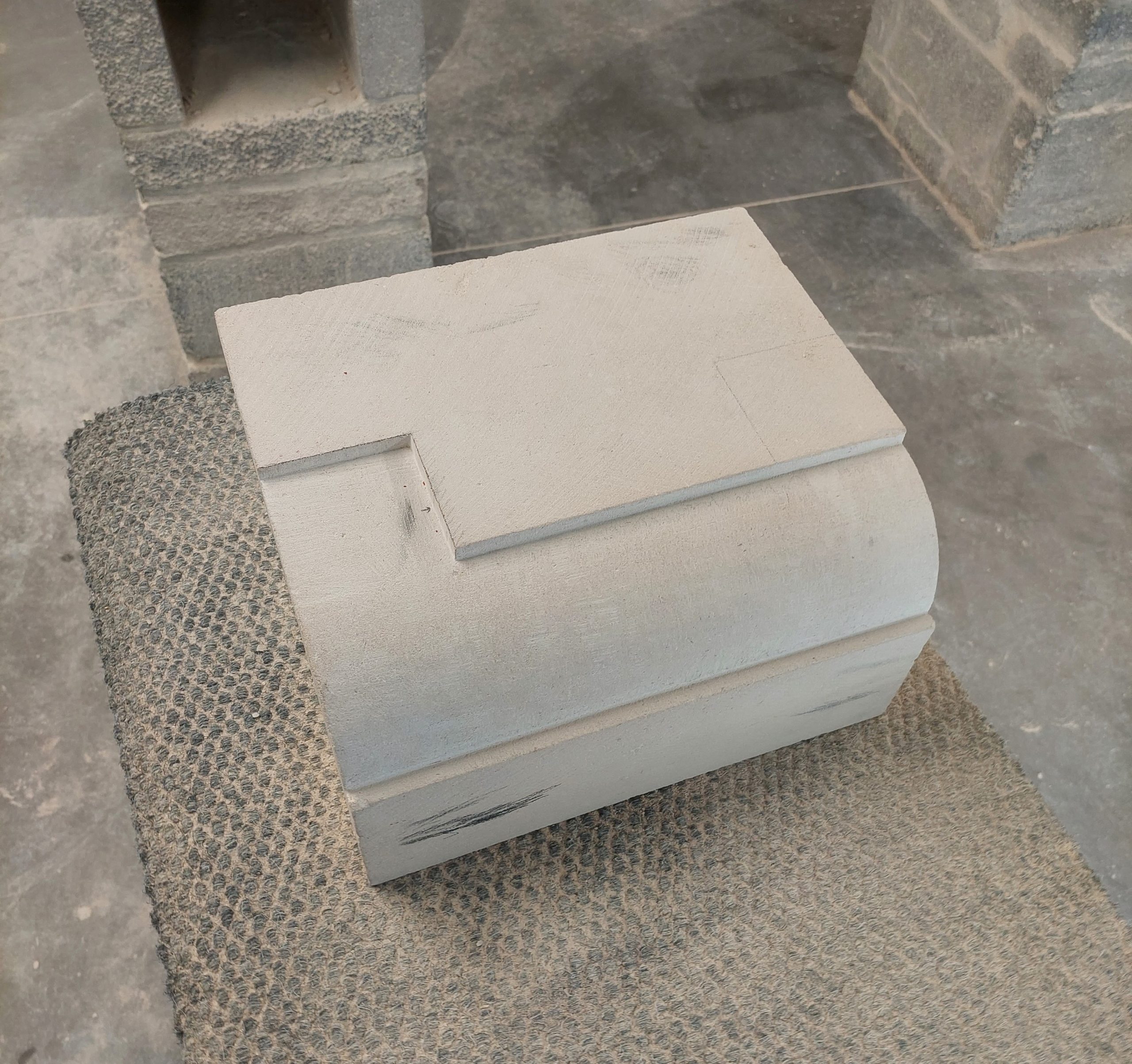Apprentice Stonemason Blog – June 2022

Hello and welcome back to this series of blog posts. My name is Joe, and I am the apprentice stonemason at Salisbury Cathedral. It’s been a few months since I last updated you on my progress, and I do apologise for the absence of content. The last few weeks have been a busy time here at the cathedral, and I’ve been enjoying the opportunity to take part in a number of public engagements. With the arrival of warmer weather our Tuesday stonemasonry demonstrations in the cloisters have recommenced, and I’ve been keen to take part. It’s great fun to take a couple hours out of the banker shop and chat to some of our visitors, and hopefully inspire a few of the younger ones to pursue an apprenticeship when they are older!
In the last week of May, myself and my colleague Alan Spittle were involved in “Stone Songs”, an orchestral concert written and conducted by composer Howard Moody for Salisbury’s International Arts Festival. We were both asked to contribute to the music by working stone live in the cathedral alongside the orchestra, choir, and soloists. We met with Howard earlier in the month to choose the stones and tools necessary to produce a variety of sounds and rhythms, which he then worked into his piece. At times we were “playing” in time with the orchestra, which was nerve-wracking but felt very cool. The architecture of the cathedral acted as huge amplifier for the noise our chisels made, and together with the music and singing the scale of the sound was phenomenal. I’m really grateful to Howard, Wiltshire Creative, and to the cathedral for giving me the opportunity to take part in what must be quite a unique experience – but one I would be happy to repeat!
These recent weeks have also been ones of development and achievement in my learning. At college, we have been producing our first moulding, which is an ovolo. This is the first time I have had to work to a template, and the first time producing a shape that isn’t square. An ovolo is a Roman moulding in the form of a quarter-circle, with small fillets at each end. It’s produced by working a large chamfer at 45-degrees, then two more at a smaller angle, then four, then eight, and so on until you have produced a smooth surface that is round in section. As I outlined in my previous blog post, the combination of flat surfaces and chamfers is the fundamental principle of most stonemasonry, so getting to grips with these techniques is essential. I found the experience much easier than I had expected it to be, given that there is very little margin for error once the template has been transferred onto the stone, and I’m looking forward to continuing my ovolo by returning the shape down both sides of the stone at right-angles to the side I have completed. Additionally, back at the cathedral I have been making progress on my squaring-up block by completing one of the flat sides vertically rather than horizontally. This technique is very important to learn as throughout a stonemason’s career there will be many times when a stone is either too big and heavy to move about on the banker, or possibly even fixed into place on-site already, and it’s crucial to be able to work a flat surface at any angle. However, the vertical technique essentially takes everything I’ve learnt about how to use my tools and flips it 90-degrees, and it has been something I’ve struggled with for a while now. Thankfully though, something at last clicked for me and I was able to produce the flat surface to a good finish whilst working at a right-angle to the stone. These are still early days for me as a stonemason, and although I would certainly like to have been able to get my head around this technique earlier on, I’m taking it as a win and I’m proud of myself for sticking with it. I think the main lesson I’ve learnt from this experience is that determination, perseverance, and resilience are just as important to stonemasonry as time on the tools.




